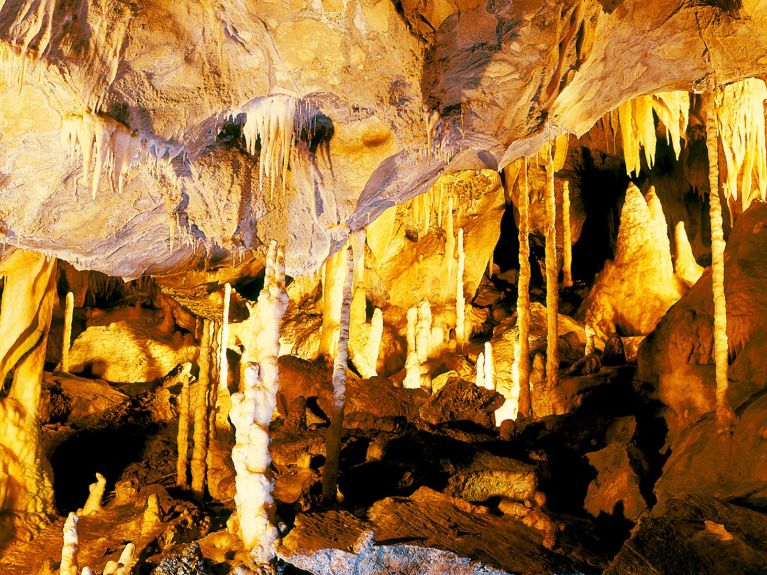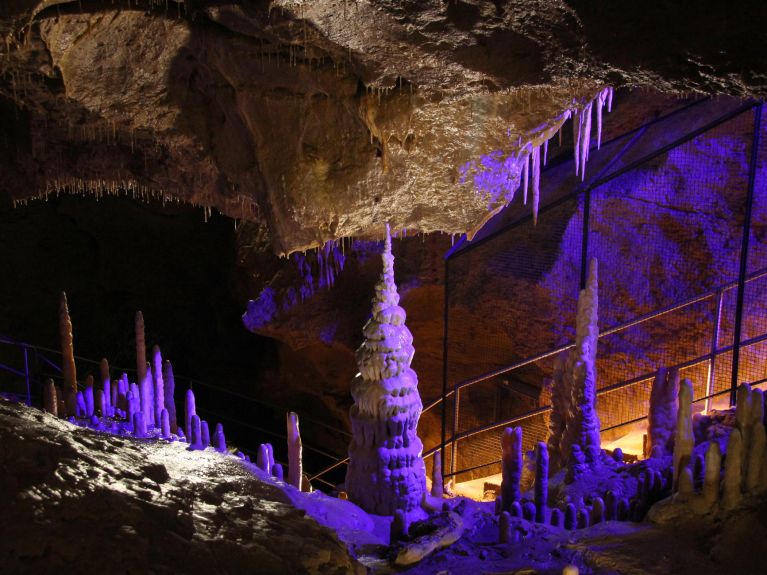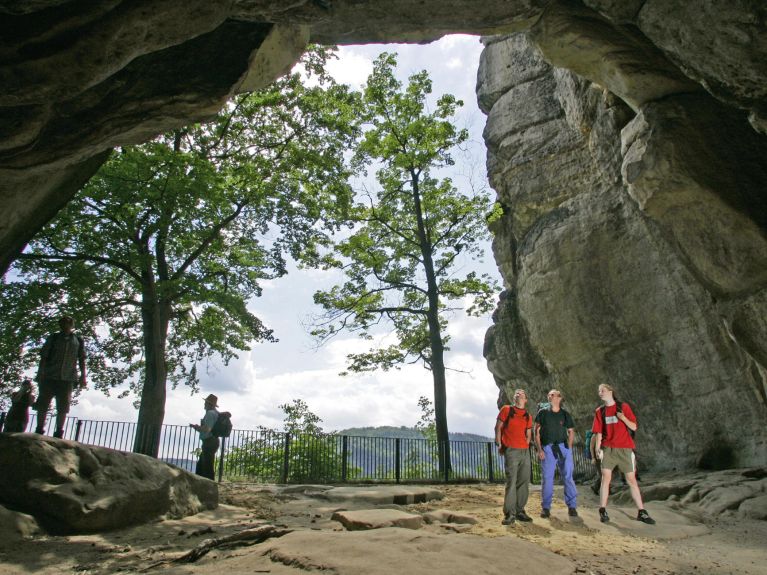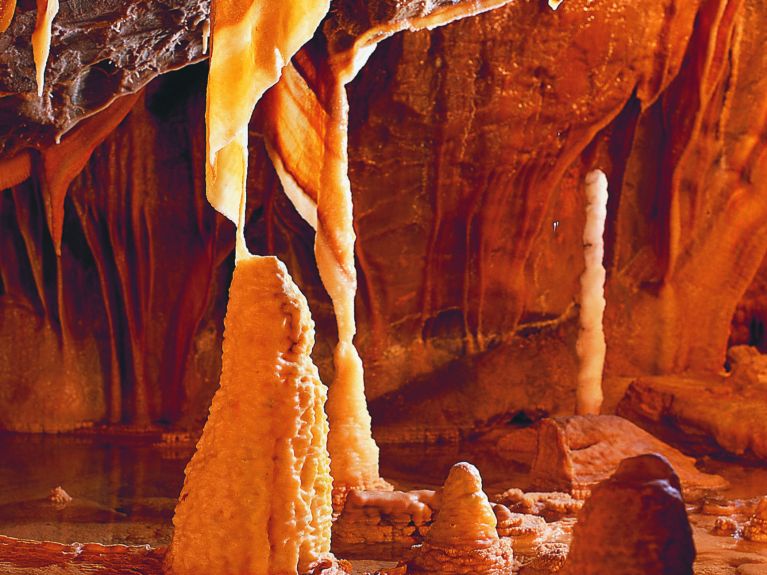Germany’s most beautiful caves
Stalagmites, stalactites and fossils: countless natural treasures are waiting underground for you to explore them.

A journey into the inner workings of nature: If you are travelling around Germany, it is very worthwhile to visit the country’s diverse cave landscapes, and to embark on a journey into the inner workings of nature. Dripstone caves are impressive natural phenomena. Lime that has accumulated over the course of thousands of years has created rock formations that decorate underground ravines and caves in the form of stalagmites growing upward from the ground and stalactites which are hanging from the ceiling. Dripstone caves are impressive natural phenomena. Lime that has accumulated over the course of thousands of years has created rock formations that decorate underground ravines and caves in the form of stalagmites growing upward from the ground and stalactites which are hanging from the ceiling.
Atta Cave: Relaxation 50 metres below ground
The Atta Cave in Attendorn in the Sauerland region was discovered in 1907 and its winding underground passages, ravines, caverns and halls cover a distance of almost seven kilometres. The accessible 560 metres long stretch attracts up to 200,000 visitors every year, who are fascinated by its mystical appearance. The cave’s colourful rock formations are truly unique. About 50 metres below ground there is also a “health grotto” whose visitors can relax on loungers. The mineral-rich cave air is considered beneficial for people who are suffering from respiratory diseases such as asthma or bronchitis.
Devil’s Cave: imposing rock structures
The so-called Devil’s Cave (Teufelshöhle) near Pottenstein in Franconian Switzerland in Bavaria that was discovered in 1922 is just as spectacular. More than 1.5 kilometres of the cave are accessible to visitors, making it one of Germany's longest show caves. In addition to imposing rock structures, visitors can discover authentic fossils, such as the skeleton of a cave bear, a species which lived in the area during the last ice age.

Saxony Switzerland: exploring rock caves
Caves are not always underground. Saxon Switzerland is famous for its characteristic sandstone rocks which conceal many little rock caves. Some of these are only accessible via challenging trails, making them particularly interesting for the more adventurous hiker.

The rock gate called Kuhstall (“cowshed”) is a natural cave passage that does not only offer shade in the midday heat, but also amazing panoramic views across the Elbe Sandstone Mountains. The Diebeshöhle (“thieves’ cave”) is located on the edge of the Quirl table hill. Its name hints at the natural attraction’s former use as a hiding place for robbers and their precious loot.



